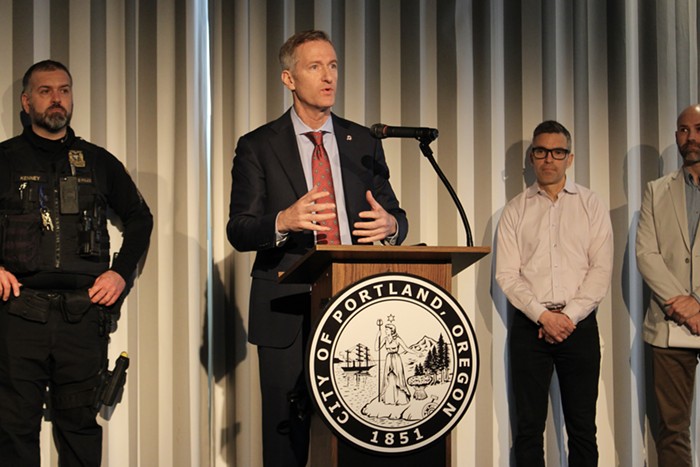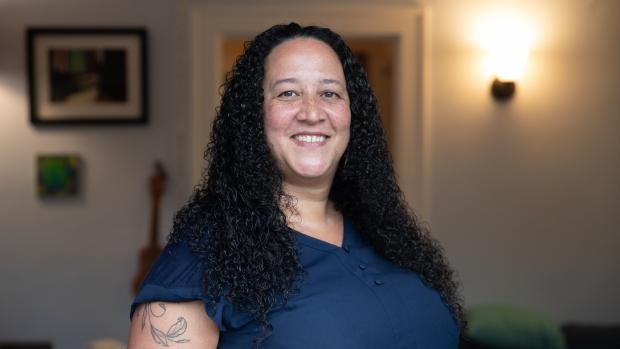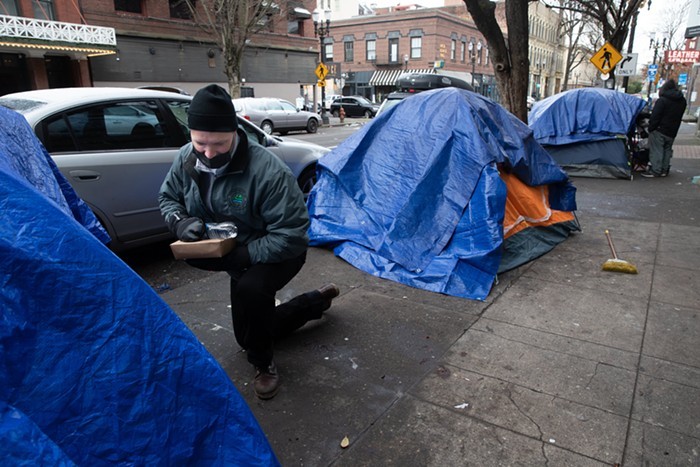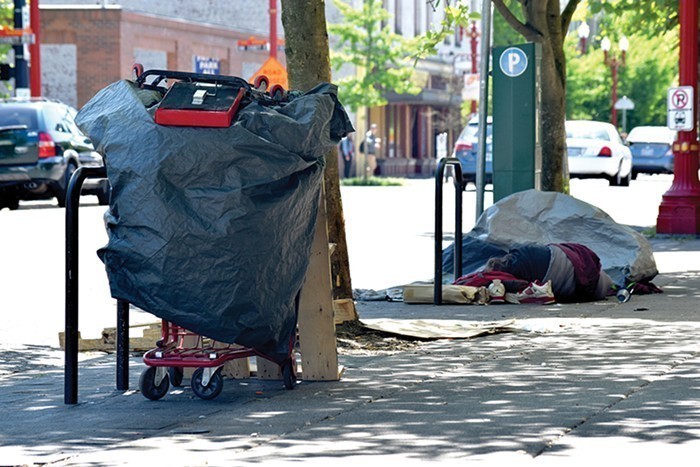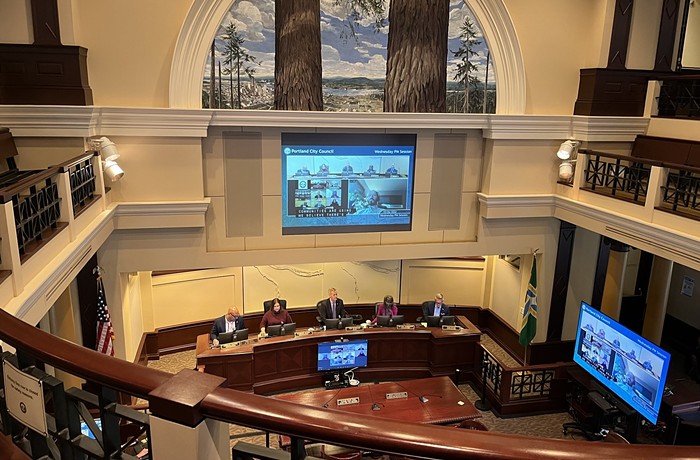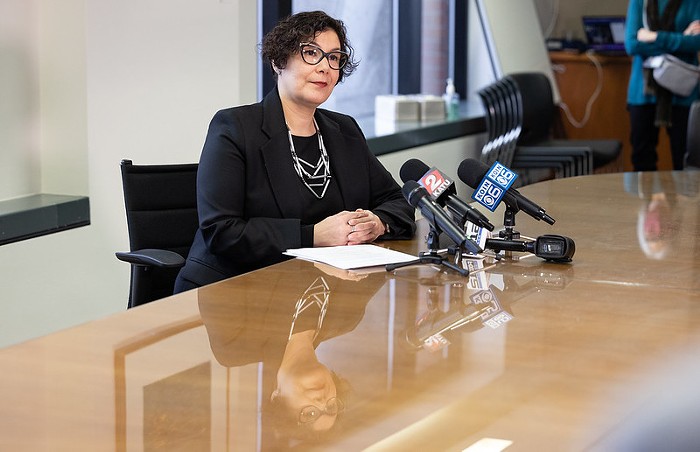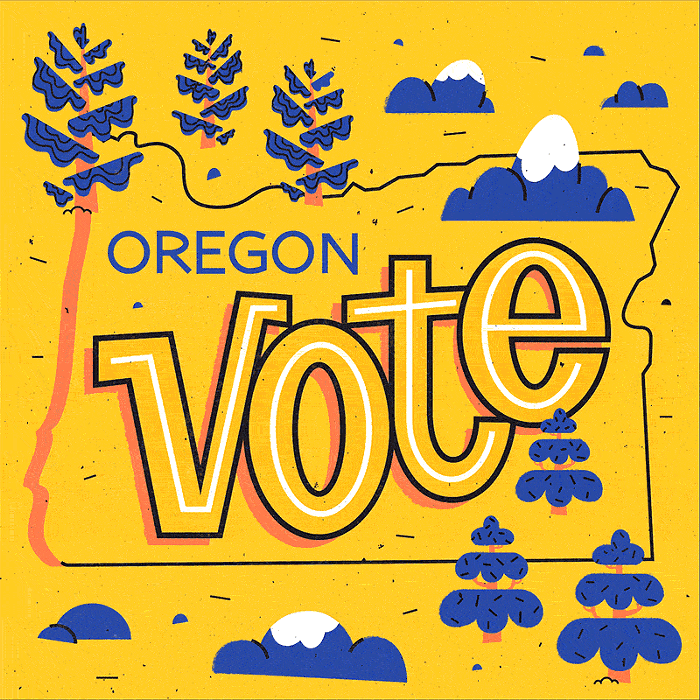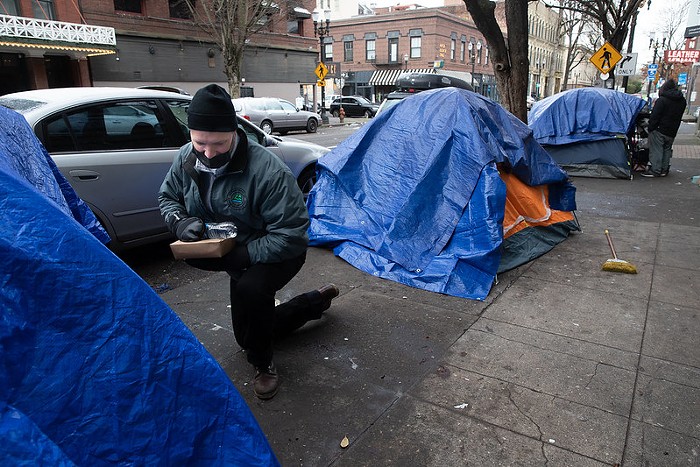
The total number of homeless people in Multnomah County is up 30 percent since 2019, according to data released by the county’s Joint Office of Homeless Services (JOHS) Wednesday. The majority of the increase is made up of people experiencing unsheltered homelessness—a term to define those who are living on the streets as opposed to in transitional housing or emergency shelters. As of 2022, 3,057 people were living unsheltered in the county, compared to 2,037 in 2019.
The data was collected as part JOHS’s biannual Point in Time Count, during which hundreds of people gather information on where homeless people in Multnomah County are spending one night of the year. This year, volunteers visited overnight shelters, encampments, transitional housing projects, and more on January 26, 2022. Because the count is conducted on one night, JOHS leaders note that it doesn’t represent how many people move in and out of homelessness throughout the year, or how many people are unhoused but temporarily staying at a friend or family member’s house that night. While the data is the best snapshot the region has when it comes to understanding the number of unhoused people in the county, leaders say it is limited and should be considered an undercount.
“The extent of homelessness in the community isn’t static, and the number of people experiencing homelessness who need services over the course of a year is much larger than any one-night number,” reads the county press release accompanying the data.
A full report on the count including age, gender, race, and more demographics about the people included in the count will be released by the county this summer.
According to Wednesday's data, the number of unhoused people in Multnomah County has increased by more than 1,000 since 2019, the last time the county conducted the count. As of January 26, 2022, outreach volunteers counted 5,228 homeless people in Multnomah County, as compared to 4,015 in January 2019. Approximately 58 percent of the county’s homeless population was living “unsheltered” at the time of this year’s count, meaning they were in unsanctioned encampments or otherwise not in a shelter or transitional housing.
While the number of shelter beds in the county has increased since 2019, the number of people using those shelter beds has stayed stagnant. Prior to the pandemic, the county had 1,350 year-round shelter beds, some of which could accommodate more than one person at a time. In 2019, 1,459 people were counted using shelters—approximately 36 percent of the homeless population at the time. In March 2022, the county had more than 1,600 beds and sleeping pods available and 1,485 people—about 28 percent of the homeless population—were using them at the time of the count.
This year, 686 people were in transitional housing at the time of the count, compared to 519 people in 2019.
Notably, people of color are still overrepresented in Multnomah County’s homeless population. Despite making up 32 percent of the county’s total population, people of color made up 39.6 percent of homeless people counted this year. That’s similar to 2019, when 38 percent of homeless people counted were people of color.
Of the people counted this year, 60 percent were male, 37.8 percent were female, 1.5 percent were transgender, and 2 percent were nonbinary, gender fluid, or a culturally specific gender.
While the county has “considerable useful information” from the sheltered homeless population, the pandemic challenged the outreach team’s ability to reach people living on the street during the count as certain outreach teams had to quarantine due to COVID-19 exposure and some usual homeless service centers where unsheltered people previously spent time were closed due to the pandemic. In 2019, the team collected 2,000 surveys from people living on the street. This year, the number dropped to 1,603. To bolster the information on unsheltered people in the county, JOHS used data from “Coordinated Access” lists—lists of unhoused people by name that the county has started collecting since the 2019 count. JOHS made sure they didn’t include people from the lists that had been counted during the count.
In a press statement, City Commissioner Dan Ryan, who oversees Portland's housing bureau and serves as the city council’s liaison to JOHS, said he is “deeply disappointed” in the county’s execution of the count. Ryan specifically critiqued the county’s collection of surveys and interviews with homeless people as part of the count process.
“Across the country, it is common knowledge that the methodology behind the Point in Time Count is fundamentally flawed,” Ryan said. “However, the approach in Multnomah County is to add in-depth interviews and layers of complexity. This approach gets us even farther from the requirements of this federal compliance exercise, and it simply doesn’t work.”
Ryan cited a need for more real-time data, which he argues can be achieved by creating a dataset that lists unhoused people by name and records their housing status at any given time, whether they are in transitional housing, in a shelter, or living in an encampment. However, according to JOHS spokesperson Denis Theriault, the lists Ryan is calling for are the same thing as the county's Coordinated Access lists that were used in this year's count.
A detailed report on the 2022 Point in Time Count is expected to be released later this summer.

